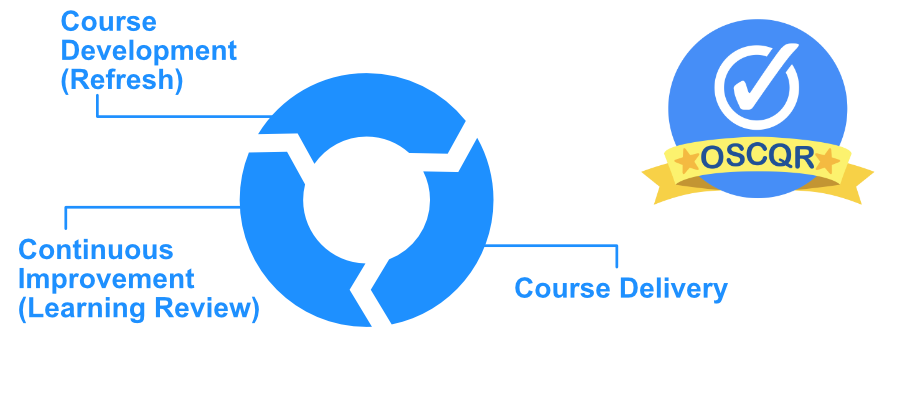
OSCQR 3rd Edition Now Available!
Recently at the SUNY Conference on Instruction and Technology, Open SUNY COTE ‘officially’ launched the newest version of the Open SUNY Course Quality Review (OSCQR) rubric. This third edition of the rubric made changes to the organization of the standards, but did not introduce significant new content. This new edition incorporates feedback from dozens of campuses and online learning leaders. The following list itemizes some of the changes we made, and our thinking behind it.
- Integration of design and accessibility standards – Version 2 of the rubric contained 37 design standards and 37 accessibility standards, each in its own tab. Separating these standards this way led to several unintended consequences:
- By separating the standards, some felt that there was an implied hierarchy. It gave the impression to some that accessibility was an afterthought, rather than something to be considered during the design of the course. This was not our intention.
- Instructors would fill out the tab labeled ‘Faculty’ and often overlook the accessibility tab, leaving that for the ID to complete. The consequence was faculty were not exposed to the accessibility standards the way we intended.
- Having sets of standards on different tabs led to difficulty printing.
- Having discreet sets of standards led to redundancy. The standards were actually developed by different sub-committees within SUNY, which led to overlap between some standards and the rubrics being longer than necessary. OSCQR went from 74 total standards to 50 without any loss in scope.
- Addition of an accessibility standard – The new standard addresses the accessibility of third-party tools incorporated into the course.
- Removal of an accessibility standard – The original standard read, “If available, a search tool should be located at the top of the course menu.” The overwhelming majority of our online courses are offered within a Learning Management System chosen by the campus. Instructors and IDs do not have the ability to add or remove a search tool, so it was impossible to address this standard.
- Removal of a design standard – The original standard read, “Course content is current, free of bias, and represents multiple perspectives.” While these are laudable goals, it was decided that this standard was really about the content of the course, and not the instructional design.
- Adjustment of the wording of several standards – We adjusted the wording of standards where there was confusion or it was difficult to differentiate between similar standards. Several standards were combined where there was redundancy or elements could be stated more succinctly. We improved the consistency in how some standards were structured.
- Adjustment of the rating scale – Some additional text was added to help clarify the meaning of minor/moderate/major.
- Reorganization of standards into new numbering and categories – Integrating the design and accessibility rubrics necessitated a need to renumber the standards. We decided it was more clear to number from 1-50, rather than include sub-standards labeled with letters. Adding categories better organized the page.
- Increased ability to extend the rubric with additional standards – Adding categories also makes it easier for us to make the rubric extensible. Our vision is to incorporate optional subsets of standards that can be easily added to the rubric. This will allow the rubric to be more responsive to the unique elements of every course. The following sets of standards are currently on our roadmap for development, with several already completed:
- Optimization for mobile learning
- Integration of open education resources (OERs)
- Large enrollment courses
- Short format courses (courses offered during a four week long intersession, for example)
- Use of virtual or alternative labs
- Blended learning
- Foreign language instruction
- Math instruction
- Use of video and multimedia
- MOOCs
- Course delivery
Future goals for OSCQR include:
- Continuing the development of additional subsets of standards.
- Expanding the “Explanations and Examples” that are provided via the ‘Need help?’ link on the rubric. These are a valuable resource for clarifying the standards and help to provide feedback. Part of this effort includes better incorporation of research citations for different standards.
You can now download a PDF copy of OSCQR 3rd Edition. You can also view a more interactive version of the standards in our Google Drive. Please feel free to ask any questions and provide feedback. We’re open to ideas about how to make the rubric better!
competency development, faculty development, online, online faculty, OSCQR, oscqr rubric